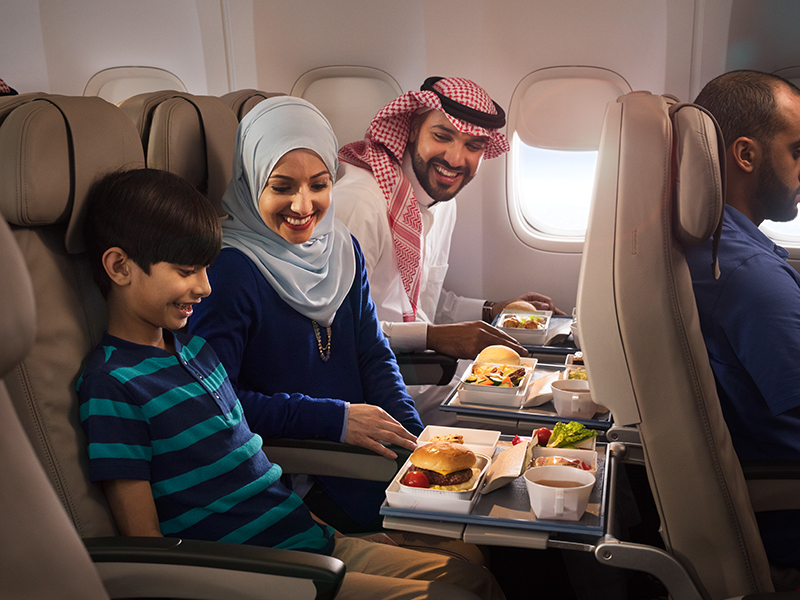Access selected deals available with budget and full-service airlines
Lock any airfare that sounds great. You don’t lose anything if you cancel it
Call us anytime for any assistance. We do not go into hibernation
Your personal and financial information stays secure with us
Saudia, officially known as Saudi Arabian Airlines, is the national flag carrier of Saudi Arabia, recognized for its rich heritage, modern fleet, and commitment to connecting the Kingdom to the world while embodying Saudi hospitality. Headquartered in Jeddah, Saudia operates primary hubs at King Abdulaziz International Airport (JED) and King Khalid International Airport (RUH), with a secondary hub at King Fahd International Airport (DMM). Below is a detailed overview of Saudia’s history, operations, fleet, services, challenges, and future outlook.
Saudia served in Middle East market, and operates scheduled domestic and international flights to over 100 destinations in the Africa, Asia, Europe and North America. Charter flights are operated mostly during the Ramadan and the Hajj seasons. It has been part of the SkyTeam airline alliance since 2012, making it the first carrier from the Persian Gulf region to join a major airline alliance. Saudia is a founding member of the Arab Air Carriers' Organization.

Saudia was founded in September 1945, sparked by a historic gift from U.S. President Franklin D. Roosevelt to King Abdul Aziz Ibn Saud in 1945—a Douglas DC-3 (HZ-AAX). This marked the beginning of Saudi Arabia’s civil aviation, with operations starting under the Ministry of Defense and managed by Trans World Airlines (TWA). The airline’s first flight in 1945 transported King Abdul Aziz from Afif to Al-Hawiyah, Taif, followed by scheduled domestic services between Jeddah, Riyadh, Hofuf, and Dhahran in March 1947. International flights began to Lydda (now Ben-Gurion Airport, Israel) for Hajj pilgrims.
In 1962, Saudia became the fourth Middle Eastern airline to operate jets, taking delivery of two Boeing 720s. On February 19, 1963, King Faisal declared Saudia a fully independent company. The airline joined the Arab Air Carriers Organization (AACO) and introduced Boeing 707s and DC-6s, expanding to cities like Frankfurt, Geneva, and Mumbai. In 1972, it rebranded from Saudi Arabian Airlines to Saudia, adopting a white fuselage with green and blue stripes. The 1970s saw Boeing 747s introduced, with leased jets from Middle East Airlines serving London routes. The 1980s marked further growth with services to Bangkok, Delhi, and New York, and the establishment of Saudia Catering.
Saudia joined the SkyTeam alliance in May 2012, becoming the first Middle Eastern carrier in a major global alliance, enhancing connectivity with partners like Delta, Air France, and Korean Air. In 2016, Saudia launched its low-cost subsidiary, flyadeal, to compete in the budget travel market. A significant rebrand in 2023 introduced a green, blue, and sand livery, celebrating Saudi culture with a modernized logo featuring crossed swords and a palm tree, aligning with Vision 2030’s tourism goals. In 2019, Saudia carried 16.8 million passengers across 77,000 flights during Hajj and Umrah seasons, showcasing its critical role in pilgrimage travel.
As of 2025, Saudia operates a fleet of approximately 149 aircraft, including Airbus A320-200s, A321s, A321neos, A321XLRs, A330-300s, Boeing 777-300ERs, 787-9s, and 787-10s, with an average fleet age of around 10 years. The airline has ordered 39 Boeing 787s for delivery by 2030 and partnered with Lilium for electric vertical takeoff and landing (eVTOL) aircraft to support urban mobility under Vision 2030. Saudia’s cargo division operates Boeing 747-400F freighters.
Saudia serves over 100 destinations across the Middle East, Africa, Asia, Europe, and North America, including domestic routes to Sharurah, Najran, Abha, and Tabuk, and international routes to London, Paris, New York, and Jakarta. Key U.S. routes include Jeddah to Los Angeles (LAX), New York (JFK), and Washington, D.C. (IAD), primarily using Boeing 777-300ERs. Seasonal Hajj and Umrah flights to Medina (MED) are offered from Los Angeles and other cities, though some operate only once annually. Saudia’s codeshare agreements with 10 SkyTeam partners, including Delta and Korean Air, enhance its global reach.
The airline’s subsidiaries include Saudia Private Aviation (SPA) for royal and government flights, Saudia Cargo, Saudia Aerospace Engineering Industries (SAEI) for maintenance, and Saudi Airlines Real Estate Development (SARED). Saudia operates from modern terminals at Jeddah (Terminal 1) and Riyadh (Terminals 3 and 4), with plans to phase out Riyadh operations by 2030.